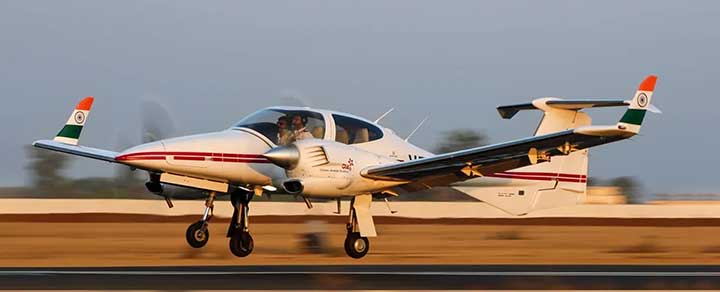Blogs & News

Why Location Can Make or Break Pilot Training?

When you’re choosing a flying school, it’s easy to focus on things like how new the aircraft are or how experienced the instructors seem. And yes, those are important. But there’s one thing many people overlook, which is “where the flying school is located.”
Believe it or not, the location can affect almost everything about a student pilot’s journey, from how quickly they finish their training to how confident they feel in the cockpit. Here's why.
1. Weather That Lets You Fly, Almost Every Day
If a flying school is in a place that has clear skies most of the year, students get to fly more often. No delays because of rain, fog, or strong winds.
More flying days mean:
- Quicker progress
- Less time waiting around
- More practice in the air
In short: Good weather = more flying = faster learning.
2. Clear, Open Skies
Flying in busy and shared airspace can be slow and frustrating. Students might have to wait their turn or stick to very specific paths.
But if the school has approved and dedicated govt. Airfields with no interruptions, so students can fly more freely:
- No long waits for take-off
- More time actually flying
- More chances to try different maneuvers
It’s like learning to drive on an open road instead of in city traffic.
3. Easy to Get There, Easy to Stay Focused
A good flying school should also be easy to reach. If it’s well connected by road, train, or nearby airports, it’s less hassle for both students and parents.
That means:
- Parents can visit without too much effort
- Students don’t waste time or energy traveling
- Supplies, fuel, and maintenance get done faster
Everything just runs smoother, and students can focus on flying.
4. More Flying Time, More Confidence
A flying school in the right location allows students to fly more frequently. And more time in the air means:
- More practice
- Better flying skills
- Greater confidence
This isn’t just about passing tests. It’s about truly learning to fly, so that students feel comfortable, capable, and ready for the real world.
5. It’s a Better Value for Your Money
Let’s be honest, pilot training is a big investment. So it makes sense to choose a school where training can be done faster and more smoothly, without unnecessary delays.
When the location supports regular flying:
- Students finish on time (or even earlier!)
- You save on extra accommodation or living costs
- Every hour and every rupee is well spent
At the end of the day, flying is a hands-on skill. The more students are in the air, the better they get. That’s why the location of the flying school is so important; it can make the difference between slow, scattered learning and a smooth, exciting journey.
So, when you’re helping your child choose a flying school, don’t just ask:
- “How many planes do they have?” or “What’s the fees?”
Also ask:
- “Can my child fly here every day?”, and “Is the weather good most of the year?”
Because the more they fly, the more they learn. And that’s what really counts.



